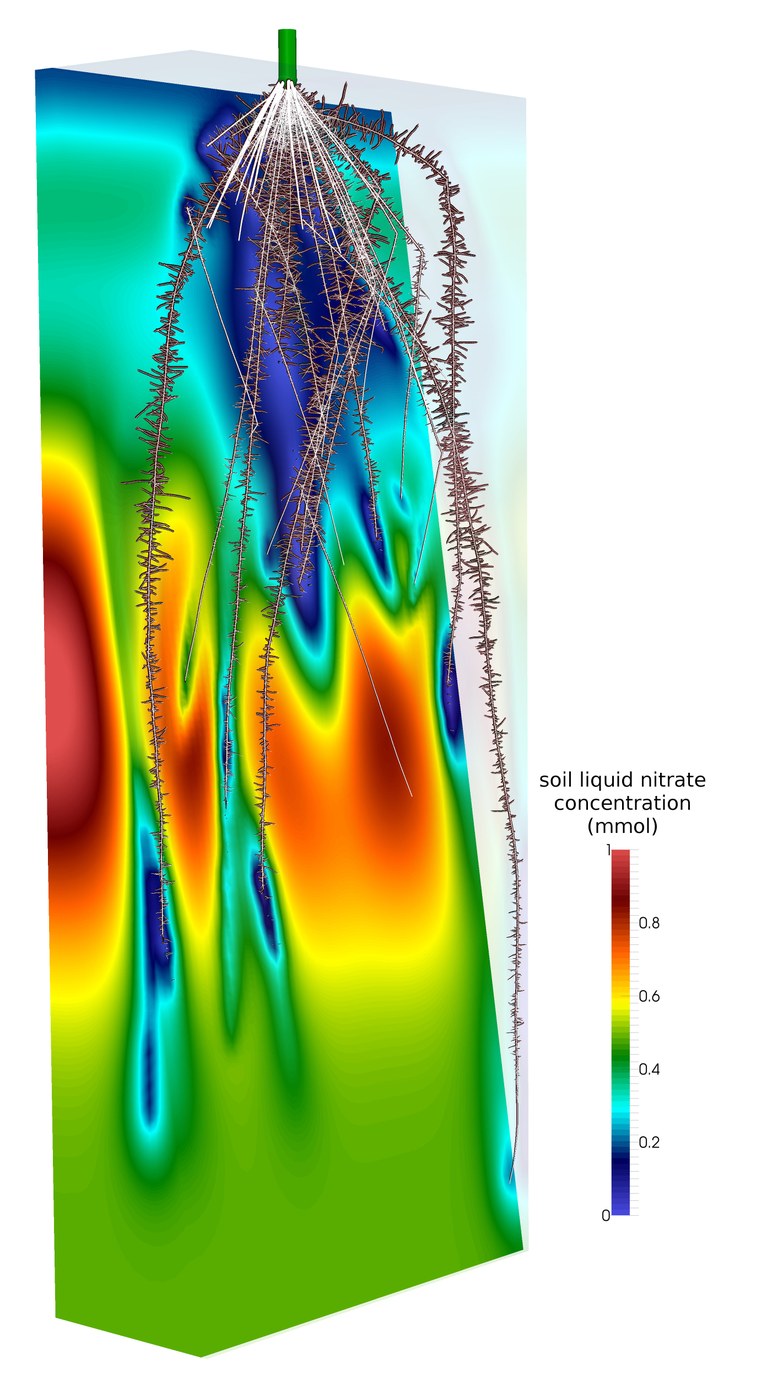
Simulated 40 day old maize root system. SimRoot was coupled to the soil hydraulic model SWMS3D to model soil nitrate depletion (color legend). Roots have dilated dark background for contrast. The soil volume was sliced to display the roots.
Authors
Postma, J.A.; Dathe. A.; Lynch, J.P.
Source
Plant Physiology, May 2014
Download Options
Plant Physiology : Full Text (Open-Access)
PDF: Full Text
Abstract
Observed phenotypic variation in the lateral root branching density (LRBD) in maize is large (1-20 cm-1 major axis), suggesting that LRBD has varying utility and tradeoffs in specific environments. Using the structural-functional plant model SimRoot, we simulated the 3D development of maize root architectures with varying LRBD and quantified nitrate and phosphorus uptake, root competition and whole plant carbon balances in soils varying in the availability of these nutrients. Sparsely spaced (<7 branches per cm), long laterals were optimal for nitrate acquisition while densely spaced (>9 branches per cm), short laterals were optimal for phosphorus acquisition. The nitrate results are mostly explained by the strong competition between lateral roots for nitrate, which causes increasing LRBD to decrease uptake per unit root length, while the carbon budgets of the plant do not permit greater total root length, i.e. individual roots in the high LRBD plants stay shorter. Competition and carbon limitations for growth play less of a role for phosphorus uptake, and consequently increasing LRBD results in greater root length and uptake. We conclude that the optimal LRBD depends on the relative availability of nitrate (a mobile soil resource) and phosphorus (an immobile soil resource) and is greater in environments with greater carbon fixation. The median LRBD observed in a large field screen was 8.5 branches per cm, suggesting that most genotypes have a LRBD that balances acquisition of both nutrients. LRBD merits additional investigation as a potential breeding target for greater nutrient acquisition.

